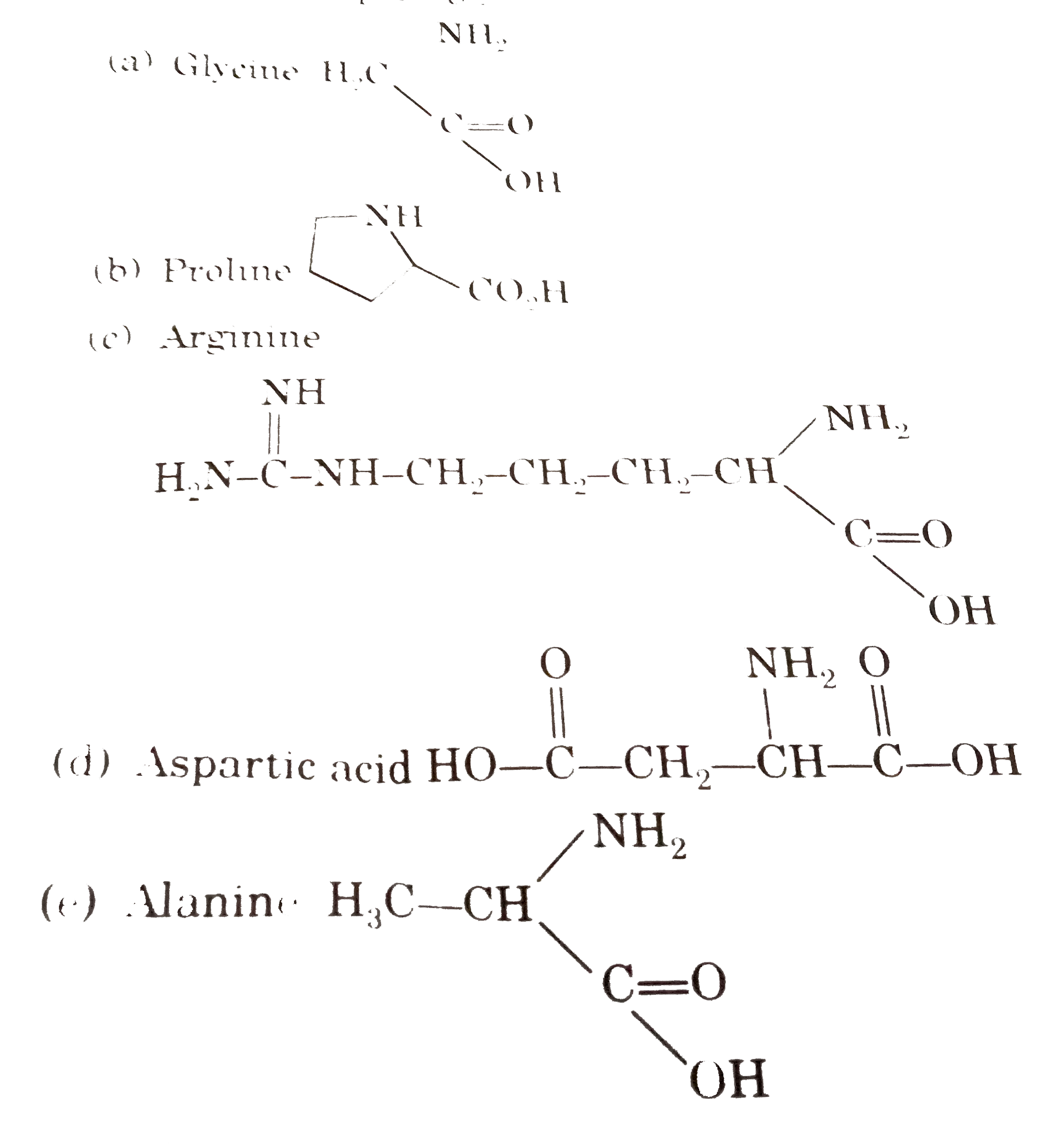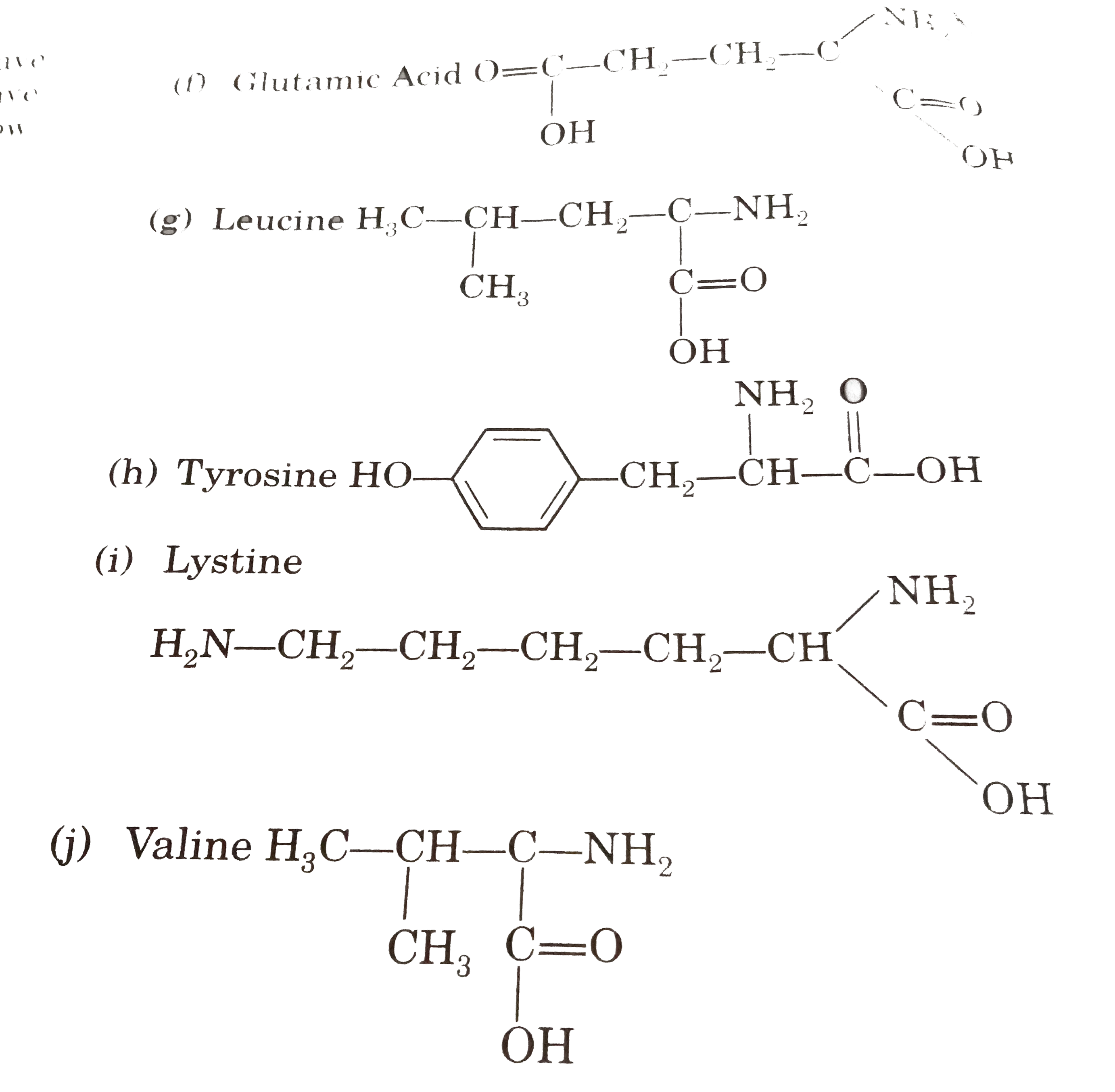Give reason :
On electrolysis in acidic solution amino acids migrate towards cathode while in alkaline solution these migrate towards anode.
Step-by-Step Solution:
1. Understanding Amino Acids:
- Amino acids are organic compounds that contain both an amino group (-NH2) and a carboxyl group (-COOH). They can exist in a form known as a zwitterion, which has both positive and negative charges but is overall neutral.
2. Zwitterion Form:
- In the zwitterion form, the amino group is protonated (-NH3+) and the carboxyl group is deprotonated (-COO-), leading to a structure like NH3+-CHR-COO-. This means that the amino acid has no net charge and does not migrate during electrolysis.
3. Electrolysis in Acidic Solution:
- When amino acids are placed in an acidic solution (which contains excess H+ ions), the H+ ions can react with the negatively charged carboxylate group (-COO-) of the zwitterion. This results in the amino acid gaining a positive charge, forming NH3+-CHR-COOH.
- Since the amino acid is now positively charged, it will migrate towards the cathode, which is negatively charged.
4. Electrolysis in Alkaline Solution:
- Conversely, when amino acids are placed in an alkaline solution (which contains OH- ions), the OH- ions can react with the protonated amino group (-NH3+). This results in the loss of a proton from the amino group, forming NH2-CHR-COO-.
- Now, the amino acid has a negative charge. Therefore, it will migrate towards the anode, which is positively charged.
5. Conclusion:
- In summary, amino acids migrate towards the cathode in acidic solutions due to the formation of a positive charge, and they migrate towards the anode in alkaline solutions due to the formation of a negative charge.
---
- Amino acids are organic compounds that contain both an amino group (-NH2) and a carboxyl group (-COOH). They can exist in a form known as a zwitterion, which has both positive and negative charges but is overall neutral.
- In the zwitterion form, the amino group is protonated (-NH3+) and the carboxyl group is deprotonated (-COO-), leading to a structure like NH3+-CHR-COO-. This means that the amino acid has no net charge and does not migrate during electrolysis.
- When amino acids are placed in an acidic solution (which contains excess H+ ions), the H+ ions can react with the negatively charged carboxylate group (-COO-) of the zwitterion. This results in the amino acid gaining a positive charge, forming NH3+-CHR-COOH.
- Since the amino acid is now positively charged, it will migrate towards the cathode, which is negatively charged.
- Conversely, when amino acids are placed in an alkaline solution (which contains OH- ions), the OH- ions can react with the protonated amino group (-NH3+). This results in the loss of a proton from the amino group, forming NH2-CHR-COO-.
- Now, the amino acid has a negative charge. Therefore, it will migrate towards the anode, which is positively charged.
- In summary, amino acids migrate towards the cathode in acidic solutions due to the formation of a positive charge, and they migrate towards the anode in alkaline solutions due to the formation of a negative charge.
Topper's Solved these Questions
- BOOK - CBSE COMPLEMENTARY MATERIALCHAPTER - BIOMOLECULESEXERCISE - SHORT ANSWER-II TYPE QUESTION13videos
BIOMOLECULES
- BOOK - CBSE COMPLEMENTARY MATERIALCHAPTER - BIOMOLECULESEXERCISE - VERY SHORT ANSWER TYPE QUESTION32videos
BIOMOLECULES
- BOOK - CBSE COMPLEMENTARY MATERIALCHAPTER - AMINESEXERCISE - 5 MARKS7videos
AMINES
- BOOK - CBSE COMPLEMENTARY MATERIALCHAPTER - CHEMICAL KINETICSEXERCISE - LONG ANSWER TYPE QUESTIONS12videos
CHEMICAL KINETICS
Similar Questions
Give reason :
On electrolysis in acidic solution amino acids migrate towards cathode while in alkaline solution these migrate towards anode.View SolutionExplain: On electrolysis in acidic solution, glycine migrates towards cathode while in alkaline solution, it migrates towards anode.
View Solution
Knowledge Check
- Question 1 - Select One
In an electric field, if an amino acid migrates towards cathode, the pH of the solution is said to be
ALess than I.P.Bmore than I.P.Cequal to I.P.D7 - Question 2 - Select One
All proteins are made up of α-amino acids which act as the building blocks. α-amino acids that are synthesised in the body, are known as non-essential α-amino acids while the one which the body fails to synthesise, are called essential α-amino acids. All of them exist as dipolar ions also known as Zwitterions. For all the α-amino acids, there is a certain pH of the medium known as isoelectric point at which the dipolar ions behave as electrically neutral species. In acidic medium, the ion migrates towards cathos while in basic medium, it migrates towards anode on passing electric current.
The isoelectric point of an amino acid isAthe pH at which it exists in basic formBthe pH at which it exists in acidic formCthe pH at which it exists in zwitterion formDthe pH equal to its Pka. - Question 3 - Select One
All proteins are made up of α-amino acids which act as the building blocks. α-amino acids that are synthesised in the body, are known as non-essential α-amino acids while the one which the body fails to synthesise, are called essential α-amino acids. All of them exist as dipolar ions also known as Zwitterions. For all the α-amino acids, there is a certain pH of the medium known as isoelectric point at which the dipolar ions behave as electrically neutral species. In acidic medium, the ion migrates towards cathos while in basic medium, it migrates towards anode on passing electric current.
Which is basic amino acid ?AAspartic acidBHistideneCValineDLeucine
(a) Name the type of linkages responsible for the formation of primary and secondary structures of proteins.
(b) On electrolysis in acidic solution, α-amino acids migrate towards cathode while in alkaline medium, they migrate towards anode. Explain.
(c ) What are essential and non-essential amino acids ? Give two examples of eachView SolutionHow many amino acids migrates towards anode on electrolysis at pH = 8 ?

 View Solution
View SolutionWhat happends when chromates are kept in acidic solution and dichromates in the alkaline solution?
View SolutionAll proteins are made up of α-amino acids which act as the building blocks. α-amino acids that are synthesised in the body, are known as non-essential α-amino acids while the one which the body fails to synthesise, are called essential α-amino acids. All of them exist as dipolar ions also known as Zwitterions. For all the α-amino acids, there is a certain pH of the medium known as isoelectric point at which the dipolar ions behave as electrically neutral species. In acidic medium, the ion migrates towards cathos while in basic medium, it migrates towards anode on passing electric current.
Which of the following is not an essential α-amino acid ?View SolutionIn aqueous solution amino acids moslty exit as
View Solution

